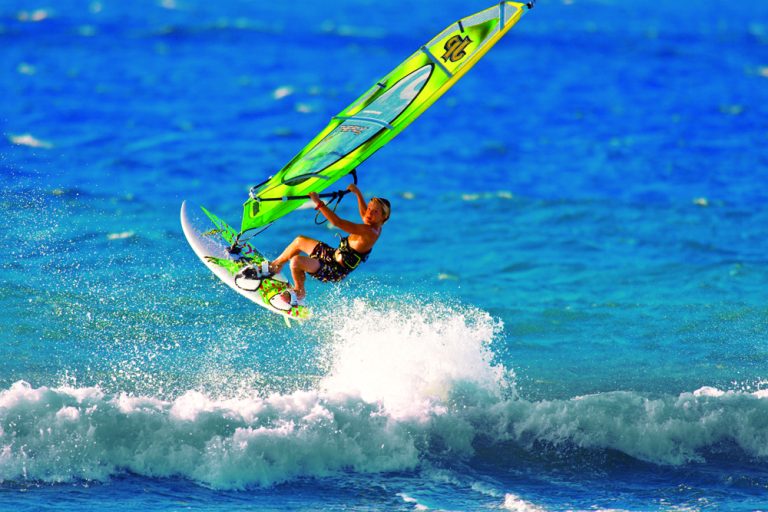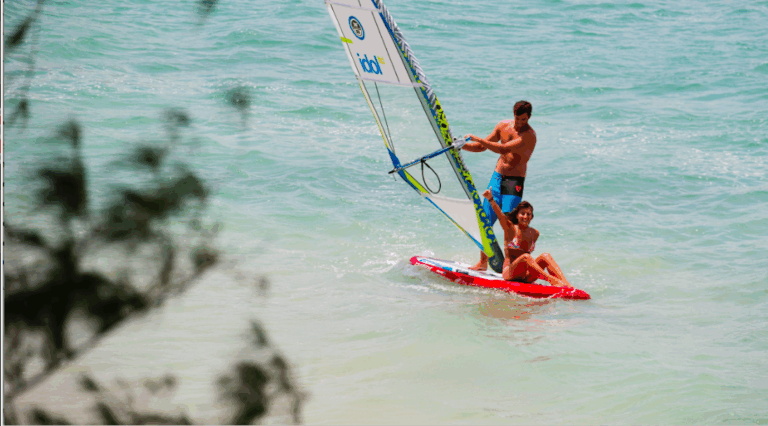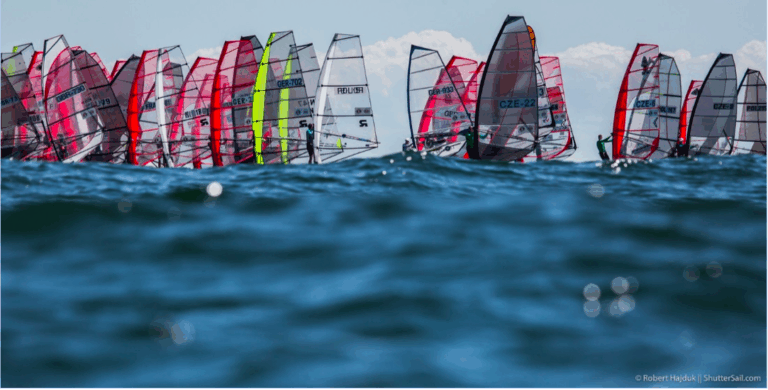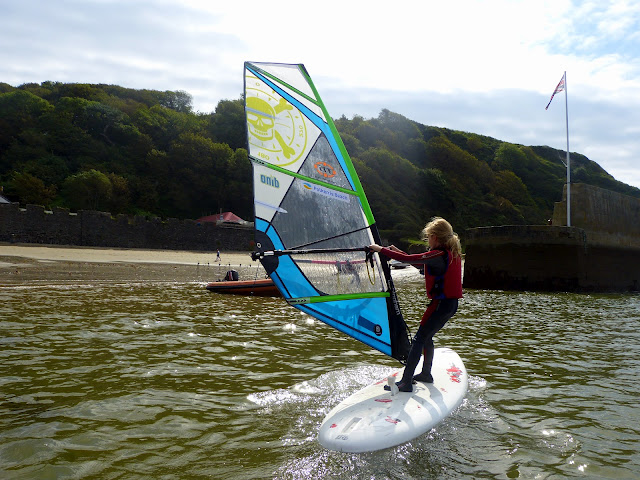In our Kids Windsurfing series we’ve already covered kids get and convincing your parents to let you have a go – now we’re moving onto some top tips on how to learn and progress as quickly as possible!
[series align=”left”]
What’s The Quickest Way To Learn?
Harry: “Do kids need a different technique to adults?”
The fundamentals are exactly the same, no matter what you’re age, so reinforcing the principles of always looking where you want to go and developing a good stance and counterbalancing against the rig as the board accelerates are all part of learning. Plus, you are far more agile than an adult, so you can get away with falling in less!
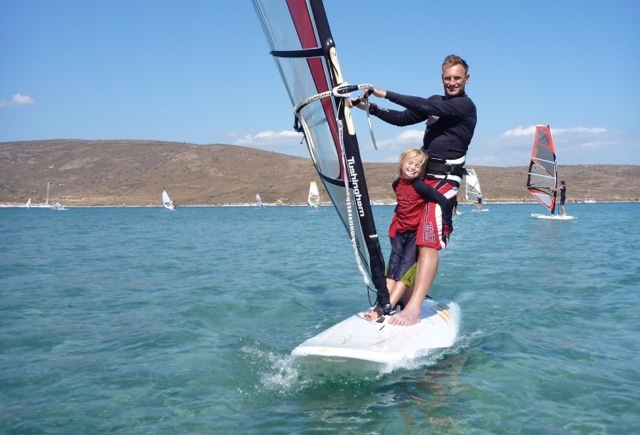
Ella: “What Will I learn in my first hour?”
A: Your first time on a board will always feel a bit wobbly and the rig seems to do whatever it wants to do, but in time you soon learn to master it. So initially just get on it, muck about and work out where you can and can’t stand and where the wind is coming from! Also, it’s worth grabbing a ride to get a feel of what it feels like to go fast!
Ella: “What’s THE quickest way to learn?”
Make sure you’re taught on flat (ideally shallow) water using a really small, light sail and a big stable board. You will soon get the very basics of pulling up the sail (uphauling) and learn to go along and turn round (tack and gybe). Whilst this is great fun, kids often find it difficult to really get a true feel of what windsurfing is like because your sails are smaller which makes the board slow and harder to turn.
So, like riding a bike it’s easier if you are moving faster. Once you have had a few hours getting used to windsurfing, ASK TO BE TOWED BY YOUR INSTRUCTOR!!! It makes pulling the sail out of the water a doddle and you’ll learn twice as facts and it’s great fun! It’s possible to tow up to 4-5 kids in one long windsurfing daisy chain with your mates!
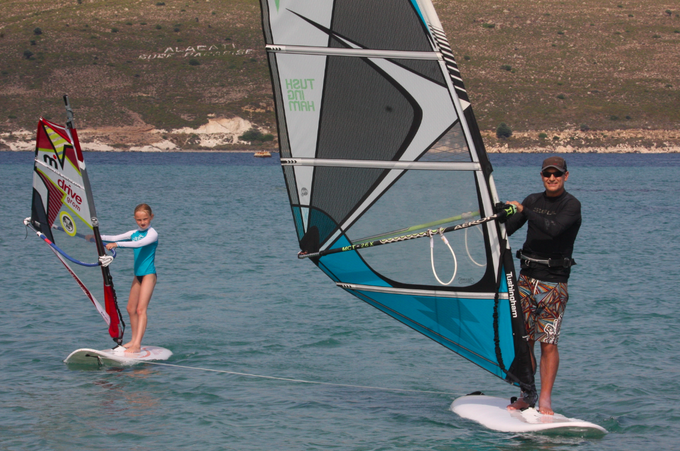
Tie a 3-6m line from tail of an adult/instructors board to the nose of your board. Ask the adult/instructor to sail forward gently as you upaul, getting going, sail upwind and even through tacks and gybes. IT’S BY FAR THE EASIEST AND QUICKEST WAY FOR KIDS TO LEARN!
ADVANTAGES OF TOWING
- A little forward momentum improves the ease of your uphauling, getting going and holding the rig up.
- It helps you to get the feel of steering up and downwind.
- It improves your understanding of wind direction, tacking and staying upwind.
- If you look forward at whoever is towing you, it helps your vision!
- You’ll feel safer and they can tow you back to shore if you get tired.
- Once you can follow, steer and tack, it’s time to come off the line!
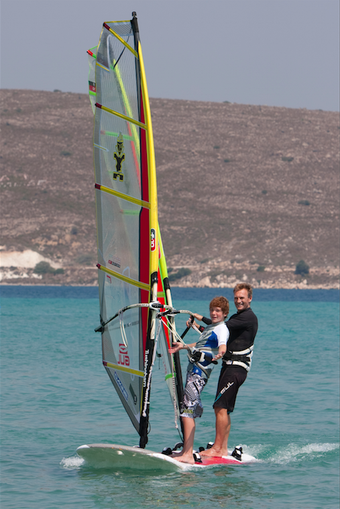
Another brilliant tool for quick kids learning is to grab a ride on a tandem. They are super stable, great fun, fast and incredibly easy to sail and learn on.
KIDWISE Top Tips!
The good thing about being young is that your balance, speed and agility mean you will learn quickly. The biggest problem for kids is strength to hold the sail and making the board go fast enough to steer. Your instructor will help you on the water, but here’s some WINDWISE Kids Top Tips from Harry, Ella and Ed!
Harry: “I found keeping my head up, looking where I wanted to go and forming a ‘7’ shaped stance really helped.
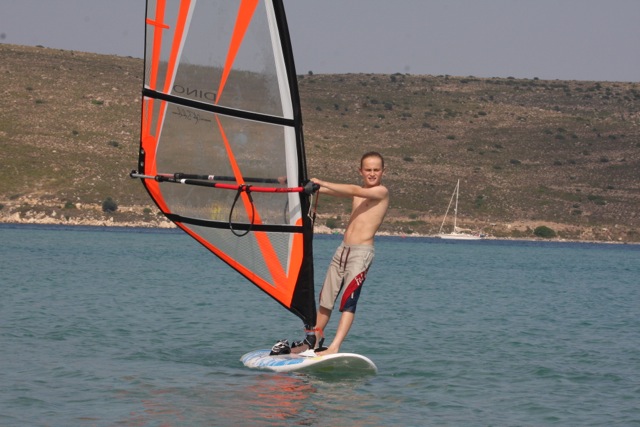
Harry:
“In stronger winds, I try to use my body weight, not my arms, so I really sit in the harness and pull down on the boom to counter balance against the stronger pull from the sail! When you’re going slowly, I keep my feet forward and inboard, then I move outboard and hopefully into the straps when I go FASTER!
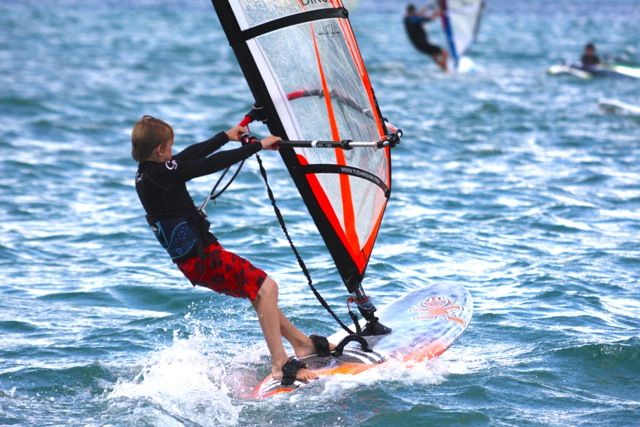
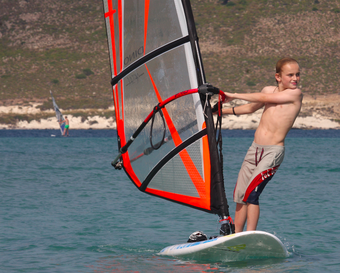
Harry:
“Staying upwind was really difficult for me, but being towed, looking upwind, hold that magic 7 shape and playing a game to dig my heels as much as possible, really helped!”
Harry:
“When tacking I try to keep my head up, look where I want to go and move in the opposite direction to the rig – otherwise I fall in!”

Entry = Rig is raked back and over the tail as the body moves forward and inboard.
Mid-tack = Rig/mast moves across the board and back (imagine you’re hitting a coke can off the tail) as the body shifts across the board and forward.
Exit = Twist the forward as the body sinks low and back.
Harry:
“Gybing is easy if you keep your head up, look where you want to go and move in the opposite direction to the rig. To make the board turn, I pull in hard on my back hand!”
Gybe Entry = Rig kept forward as the body sinks low and back.
Mid-gybe = Hips and upper body shift and lean across into the turn as the rig/mast is leant out of the turn and to leeward.
Foot Change = Switch the feet dead down wind.
Gybe Exit = Rig is rotated towards the tail of the board and then forward as the body sinks low and back to promote a controlled exit
What next?
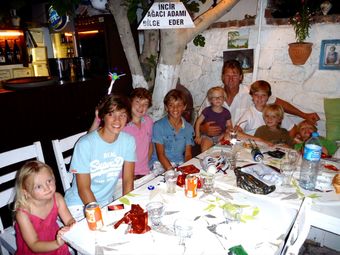
As you progress, you’ll start to harness, use the footstraps, plane and once you have cracked waterstarts you’ll be amazed at what you can achieve. There are kids as young as 10 riding waves and even looping! But make sure you appreciate your parents caddying for you and carrying all your kit. So don’t get too good too soon if you want them to keep taking you windsurfing! But if you keep going you could end up like multiple world champion Bjorn Dunkerbeck!
See you on the water. Simon Bornbhoft
The Windwise Skills Training System provides a unique coaching system that fast tracks the learning process and really accelerates the learning process. Contact [email protected] or www.windwise.net for more info on UK and overseas courses and experiences for windsurfers of all ages and abilities!

